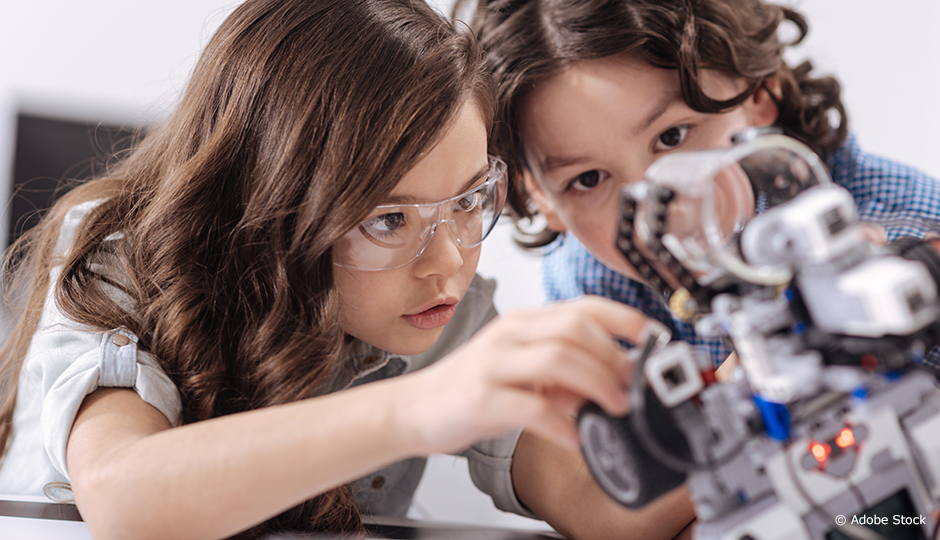Starting science and technology education at the elementary level is essential in a society whose need for science culture and new scientists is greater than ever. Could robotics contribute to learning science in the classroom?
Students at École La Minerve used a robot to explore the principles of simple machines such as gears, the wheel, etc.
Sandrine Turcotte, a researcher in science and technology education at Université du Québec en Outaouais, led a project from 2013 to 2016 aimed at training future teachers in the use of robotics to teach science in elementary school, while documenting the learning resulting from the use of these tools.
The education students were paired with an elementary school class. After being presented with a situational problem chosen by the student teachers, the elementary students shared their solutions and suggestions during a discussion group. This led to the selection of projects to be carried out using robots. The student teachers then went into the classroom to help the young students carry out their project. For example, in 2014, students in Grades 1 to 3 at École La Minerve in Labelle used a robot to explore the principles of simple machines such as gears, the wheel, etc.
This project introduced future teachers to the use of robotics in teaching science, and advanced knowledge on the student learning that takes place while carrying out robotics activities. Curriculum-based disciplinary skills (solving of scientific and technological problems, the use of procedures and tools) and transversal skills (teamwork, cooperation, collaboration) could be closely observed.
This work will help inform future teachers about the science and technology skills and knowledge developed by students in an innovative context such as building and programming a robot.
The findings have been published in the journals Spectre, Vivre le primaire and Magazine Zone, and in scientific papers.




